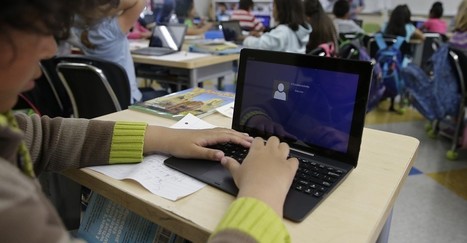In decades past, students needed little more than paper, pencils, and time to get their schoolwork done. For the vast majority of students, that's no longer the case. Most schoolwork these days necessitates a computer and an internet connection, and that includes work to be done at home. One federal survey found that 70 percent of American teachers assign homework that needs to be done online; 90 percent of high schoolers say they have to do internet-based homework at least a few times a month. Nearly half of all students say they get such assignments daily or almost daily.
Research and publish the best content.
Get Started for FREE
Sign up with Facebook Sign up with X
I don't have a Facebook or a X account
Already have an account: Login
News, reviews, resources for AI, iTech, MakerEd, Coding and more ....
Curated by
John Evans
 Your new post is loading... Your new post is loading...
 Your new post is loading... Your new post is loading...
|
|











